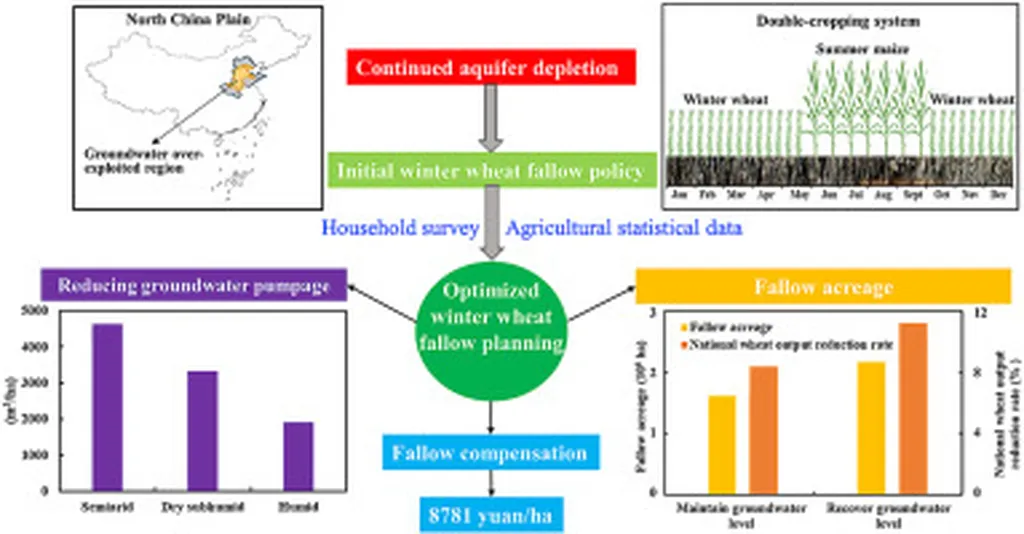In the heart of China’s Bashang Plateau, a delicate balance is being struck between the demands of agriculture and the pressing need to preserve precious groundwater resources. This region, often referred to as the “Ecological Barrier” against wind-driven sand invasion, is also a critical water conservation area for the densely populated Beijing-Tianjin-Hebei region. However, the rapid expansion of the vegetable industry since the 1990s has put immense pressure on local water resources, threatening both regional water security and ecological stability.
A recent study published in the journal *Agricultural Water Management* (translated as *Agricultural Irrigation and Drainage Management*) sheds light on this complex issue, offering a path forward that could have significant implications for the energy sector and beyond. Led by Gong Cheng of the Hebei Key Laboratory of Agricultural Water-Saving and the Natural Resource Ecology Laboratory at Colorado State University, the research team set out to quantify crop-specific water consumption and explore sustainable planting structures that could reduce agricultural water use while maintaining economic and ecological viability.
The team analyzed the temporal dynamics of dominant crop planting areas, including corn, beans, naked oats, oilseeds, coarse cereals, sugar crops, potatoes, and vegetables, along with regional precipitation, temperature, and soil moisture distribution from 2000 to 2020. Through field experiments conducted between 2021 and 2022, they measured crop-specific evapotranspiration (ET), a critical metric for understanding water use in agriculture.
One of the key tools employed in this study was the nondominated sorting genetic algorithm II (NSGA-II), a sophisticated optimization technique used to generate sustainable planting structures under various water-saving targets. “We wanted to understand how we could reduce water use without compromising the economic and ecological benefits of agriculture in this region,” Cheng explained. “By using NSGA-II, we were able to explore a range of scenarios and identify the most promising strategies for achieving this balance.”
The findings revealed that over the past two decades, the planting structure in the Bashang Plateau had shifted toward more water-intensive crops, peaking between 2013 and 2016 before declining due to water scarcity and market dynamics. The study identified a 10% water reduction scenario (S1) as feasible, involving a reduction in the planting area of potatoes and vegetables and an increase in coarse cereals, particularly in regions with lower precipitation like Shangyi and Kangbao. This approach maintained economic benefits and ecosystem service value, offering a promising path forward.
However, more aggressive water reduction targets of 20% and 30% (S2 and S3) resulted in economic losses of 6% and 12.7%, respectively. “While coarse cereals could partially offset the losses from reduced potato and vegetable production, they couldn’t fully compensate for the economic impact of more significant water reductions,” Cheng noted. “This highlights the need for a balanced approach that prioritizes high-value crops while limiting water-intensive crops to ensure a sustainable agricultural system.”
The implications of this research extend beyond the agricultural sector, with significant relevance for the energy sector and water management professionals. As groundwater over-extraction continues to threaten ecological stability and water security, innovative solutions that balance economic, ecological, and water conservation goals will be crucial. The study’s findings could inform future developments in irrigation technologies, policy incentives, and sustainable agricultural practices, shaping a more resilient and water-efficient future for ecologically sensitive regions.
As the world grapples with the challenges of climate change and water scarcity, the insights gained from this research offer a beacon of hope. By optimizing crop planting structures and adopting innovative technologies, it is possible to strike a delicate balance between the demands of agriculture, the needs of the energy sector, and the imperative of preserving our precious water resources. In the words of Gong Cheng, “This study underscores the importance of a balanced crop restructuring strategy that prioritizes high-value crops while limiting water-intensive crops to ensure a sustainable agricultural system in ecologically sensitive regions.”

